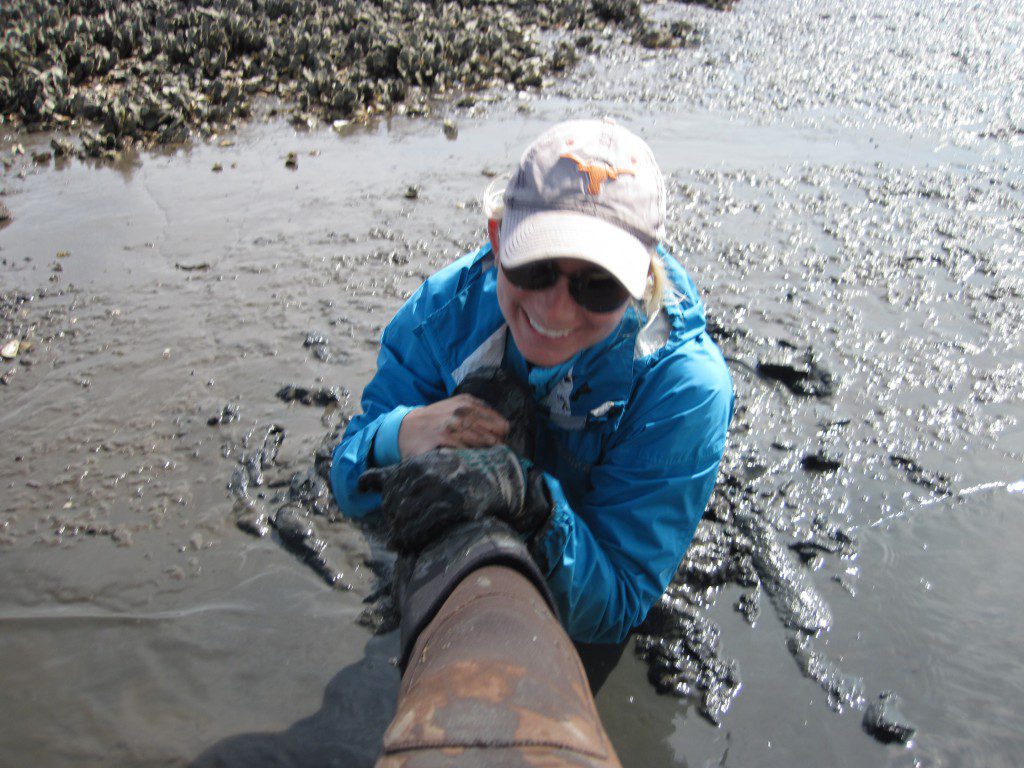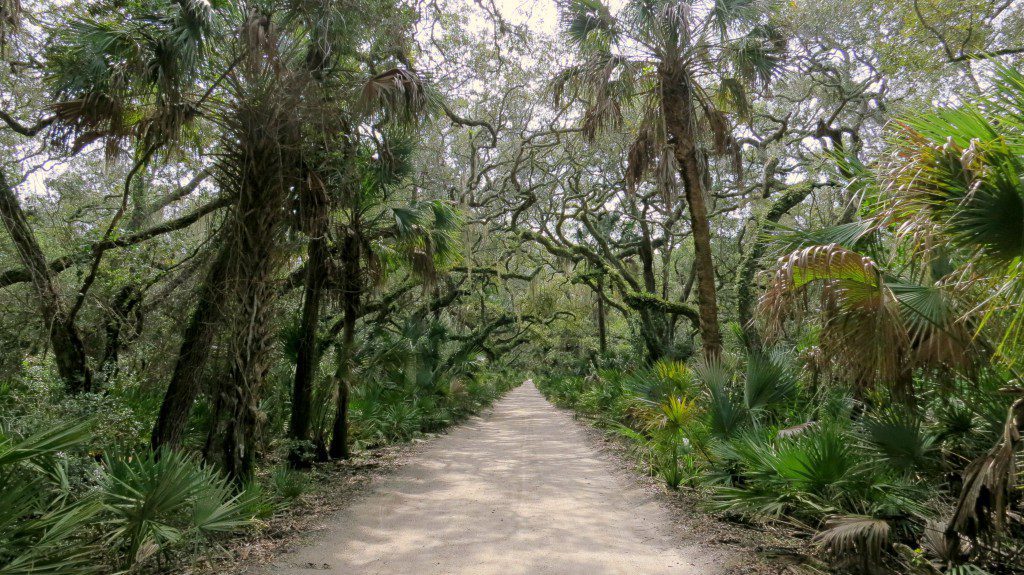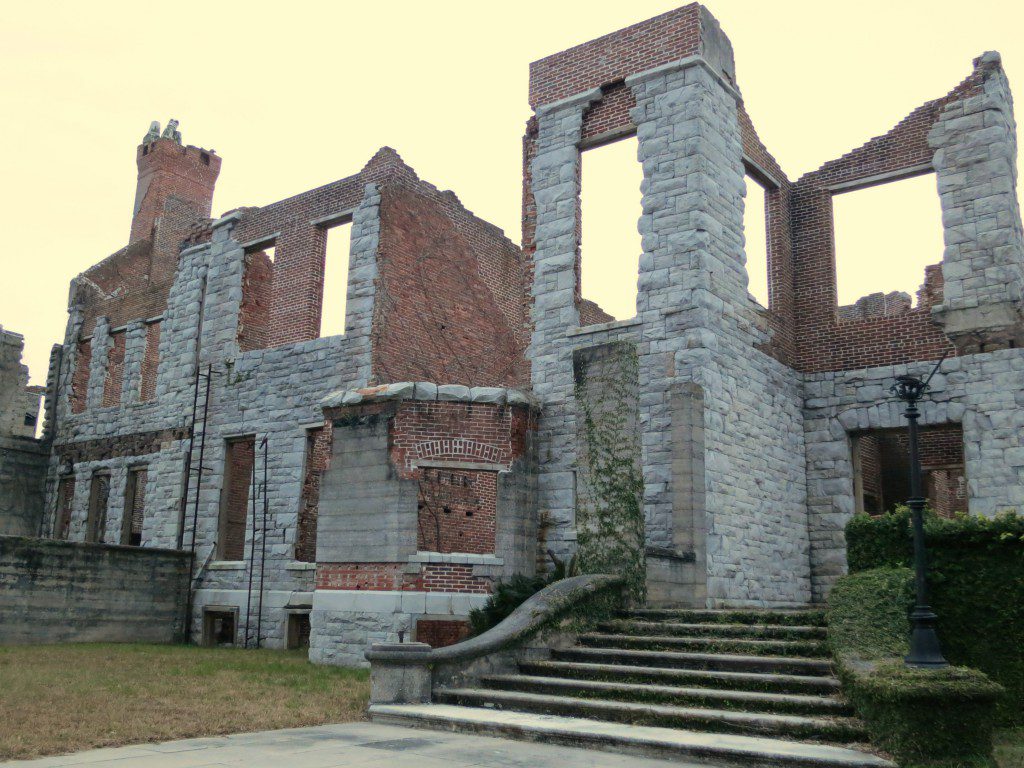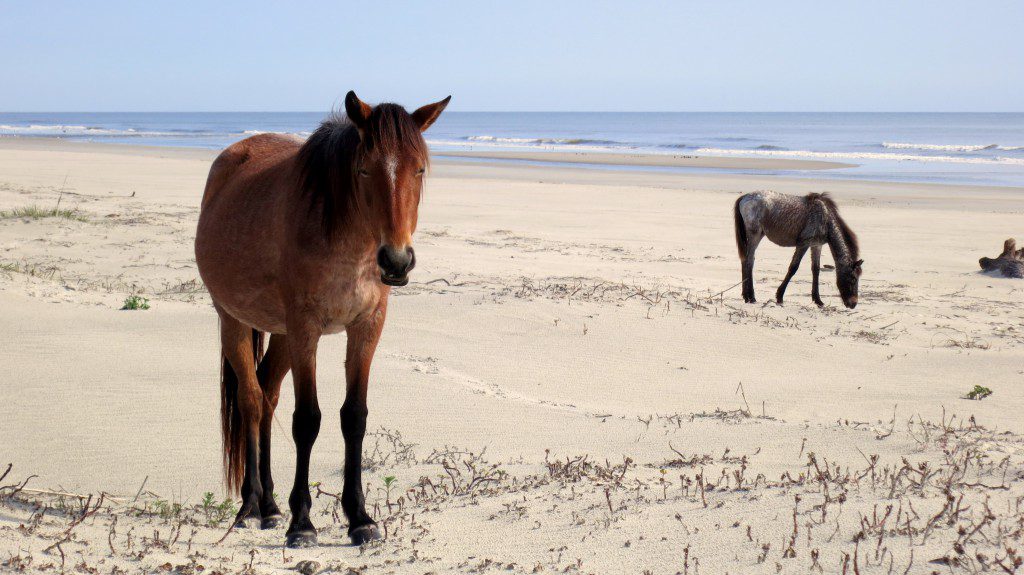Lately, the Hugh-Bro (Hughes and Kimbro) Lab has covered a lot of miles. Dr. David Kimbro and Dr. Randall Hughes have accepted positions at Northeastern University in Boston. Tanya Rogers is David’s first graduate student at NEU, though her dissertation is on Bay Mouth Bar at the mouth of Alligator Harbor. Hanna Garland (who had spent a year living in Saint Augustine Beach for her graduate work with David) and Stephanie Buhler are covering Apalachicola Bay, though Stephanie will start her PhD. work in the Bahamas soon. We’ll let Ryan Coker tell you of his East coast adventures helping Meagan Murdock wrap her National Park Service tile experiment…
Ryan Coker FSU Coastal & Marine Lab

Timucuan - Here I am inspecting a tile as we made our way to the next reef. Looks like these particular oysters didn't fare well, but we saw plenty that did!
For the last couple months, a lot of my responsibilities around the lab have shifted from working out in the field to processing samples from our salt marsh projects (recently, measuring the organic content of sediment samples, i.e. setting dirt on fire and calculating the missing weight). This past week I was happy to be recruited from my normal lab duties to help out on Meagan’s National Park Service oyster experiment, recovering our oyster-covered paving bricks from the experimental reefs for analysis. This meant packing my bags to leave for a six-day field trip to visit our reef sites at Timucuan Ecological & Historic Preserve in Jacksonville and Cumberland Island National Seashore, a barrier island off of Georgia’s coastline. I was told to prepare for precarious treks through oystershell, leg-swallowing mud, and swarms of no-see-ums who, in spite of their name, were determined to get noticed. I prepared for these challenges in earnest, with thick boots and quick feet and enough bug spray to at least suggest that eating me alive wasn’t in any insect’s best interest. But what I wasn’t ready for was the sheer beauty of these places. I feel immensely lucky to have found my calling in ecology—I do the work I love, and I get to do it in the loveliest places.

Timucuan - Meagan decided to test the depth of this mudflat to see if we could access one of our oyster reefs at very low tidal height. As she progressed downward at a rate far exceeding her forward gains, it was clear that we were going to have to wait out the tide and try again. Thank you, Meagan, for being such a champ and getting completely mud-covered while I waited on the boat, laughing and taking pictures. Here she is using my leg to pull herself out of the muck as I perched on the ledge of the pontoon boat.
Because we had a free half-day on Cumberland Island while we waited for the National Park Service to come and ferry us back to the mainland, Meagan and I set off to explore the island. We traded our boots and waders for sneakers and shorts long, bug-proof pants. Transitioning from a field tech to a tourist for just a few hours, I ran up and down the island in an attempt to see it all. It was gorgeous.
 The forest was intercut with dirt paths canopied by towering palms and the twisting limbs of immense Live Oaks. The infinite beach, its width rolled out flat from delicate high-blown dunes to where it dips below the lapping ocean tide, is home to shorebirds and “wild” packs of roaming horses.
The forest was intercut with dirt paths canopied by towering palms and the twisting limbs of immense Live Oaks. The infinite beach, its width rolled out flat from delicate high-blown dunes to where it dips below the lapping ocean tide, is home to shorebirds and “wild” packs of roaming horses.
What I found most striking, though, were the crumbling skeletal remains of Dungeness, a mansion built in the 1880s, abandoned in 1925, and burnt to ruins by the 1960s.
 Imagining this place in its glory, I filled in the gaps of the walls and floors where they were collapsed and covered by weeds and rubble. There’s not much left, and I didn’t dwell on my fiction overmuch, but I sure would have loved to see that mansion as it stood. It made me think about the impacts we make on the world, the legacies we’re trying to build before we go. I feel really good about the work I contribute to in the lab. To the metaphorical library of scientific knowledge, I’d like to think the work I do is helping to add-on another room. We’re in the ecology wing, expanding it out, adding just a bit to the collection. It’s our mansion, and at the very least, it’s fireproof.
Imagining this place in its glory, I filled in the gaps of the walls and floors where they were collapsed and covered by weeds and rubble. There’s not much left, and I didn’t dwell on my fiction overmuch, but I sure would have loved to see that mansion as it stood. It made me think about the impacts we make on the world, the legacies we’re trying to build before we go. I feel really good about the work I contribute to in the lab. To the metaphorical library of scientific knowledge, I’d like to think the work I do is helping to add-on another room. We’re in the ecology wing, expanding it out, adding just a bit to the collection. It’s our mansion, and at the very least, it’s fireproof.
Of course, mostly I just thought “Holy cow, this is gorgeous,” as I snapped away, already daydreaming about the next spectacular place I might have the opportunity to visit with the lab.


